




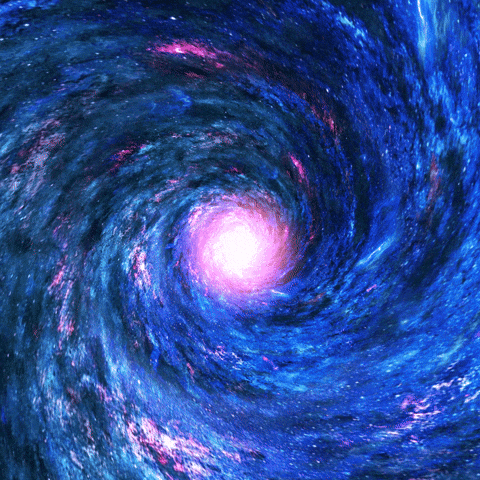
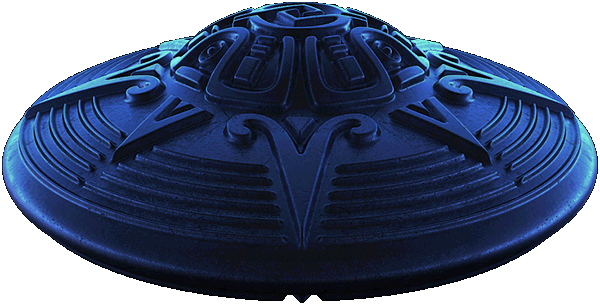

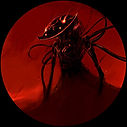
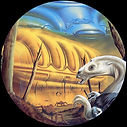

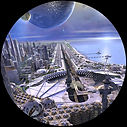

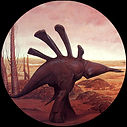


LIFE ON OTHER PLANETS
A NASA sounding rocket will observe a nearby star to learn how starlight affects the atmospheres of exoplanets – key information in the hunt for life outside our solar system.
Using an updated instrument first launched in 2019, the mission has a new target: Procyon A, the brightest star in the constellation Canis Minor. But its question remains the same: How does a star’s light affect potential signs of life on planets that orbit it?
A size comparison of main sequence Morgan–Keenan classifications. Main sequence stars are those that fuse hydrogen into helium in their cores. The Morgan–Keenan system shown here classifies stars based on their spectral characteristics. Our Sun is a G-type star. SISTINE-2’s target is Procyon A, an F-type star.
Credit: NASA’s Goddard Space Flight Center
The Suborbital Imaging Spectrograph for Transition region Irradiance from Nearby Exoplanet host stars, or SISTINE-2, mission will have its first opportunity to launch from the White Sands Missile Range in New Mexico on Nov. 8.
Answering the question of whether life exists elsewhere in the universe is beset with technical challenges. We can’t yet travel to planets around other stars, called exoplanets, to see for ourselves. Nor are our telescopes powerful enough to see their surfaces.
Instead, astronomers look to an exoplanet’s atmosphere, scouring it for traces of chemicals associated with life. Water, methane, oxygen, ozone, and other so-called biomarkers produce unique patterns of light that telescopes can detect from afar. But to interpret them correctly, astronomers must look to the planet’s star.
“The interplay between the planet’s atmosphere and ultraviolet light from the host star determines which gases serve as the best biomarkers,” said Kevin France, an astrophysicist at the University of Colorado Boulder and the principal investigator for the mission.
Some ultraviolet (UV) wavelengths, for instance, can break down carbon dioxide, freeing a single oxygen atom to combine with others and form molecular oxygen (made of two oxygen atoms) or ozone (made of three). Stars that shed enough of this light can create spurious biomarkers on their planets, sending astronomers searching in the wrong places.
The SISTINE team aims to avoid this quandary by creating a guide to the wavelengths each kind of star emits. There are many different types of stars, and we don’t yet have a complete picture of their light output or how it varies over time. With a catalog of starlight, scientists could estimate if a detected biomarker is either a potential sign of life or a false signal cooked up by pesky starlight.
A sounding rocket launches from the White Sands Missile Range, New Mexico.
Credit: NASA/White Sands Missile Range
On its upcoming flight, SISTINE-2 will observe Procyon A, some 11.5 light-years away. Procyon A is an F-type star, which is slightly larger, hotter, and brighter than our Sun. Though it does not have any known exoplanets, studying Procyon A can help us understand F-type stars and their exoplanets throughout the universe.
“Knowing the ultraviolet spectra of these stars will help us find the most promising star-planet environments with future NASA observatories,” France said.
SISTINE-2 comprises a telescope and an instrument known as a spectrograph, which breaks light into its separate colors. SISTINE-2 will focus on ultraviolet light from 100 to 160 nanometers, a range that includes wavelengths known to produce false positive biomarkers. By combining their data with existing observations of X-ray, extreme ultraviolet, and visible light from other F-type stars, the team hopes to assemble a reference spectrum that will help astronomers interpret biomarkers on exoplanets orbiting F-type stars.
SISTINE-2 is also testing hardware. Before its 2019 flight, the team applied an enhanced lithium fluoride optical coating to the instrument’s mirrors to improve its UV reflectivity. The results some three years later help evaluate whether this specialized coating may be suitable for larger, longer-duration space missions.
As in its 2019 flight, the instrument will launch on a sounding rocket, a small suborbital rocket that makes brief observations in space before falling back to Earth. Ascending to an estimated altitude of about 174 miles (280 kilometers) to access ultraviolet light otherwise absorbed by our atmosphere, SISTINE-2 will observe Procyon A for about five minutes. The instrument will then fall back to Earth, descending by parachute for recovery and refurbishing.
The team hopes for a soft landing to aid in a quick turnaround to be ready for its third launch in July 2022, from the Arnhem Space Centre in Nhulunbuy, Australia. There, a refurbished SISTINE instrument will observe Alpha Centauri A and B, G- and K-type stars, respectively, similar to and slightly cooler than our Sun, and the closest such stars to us. This system is also home to Proxima Centauri, a cool red dwarf star orbited by the closest known exoplanet, Proxima B. These observations will add additional entries to the growing star catalog – small but critical steps in the search for life.
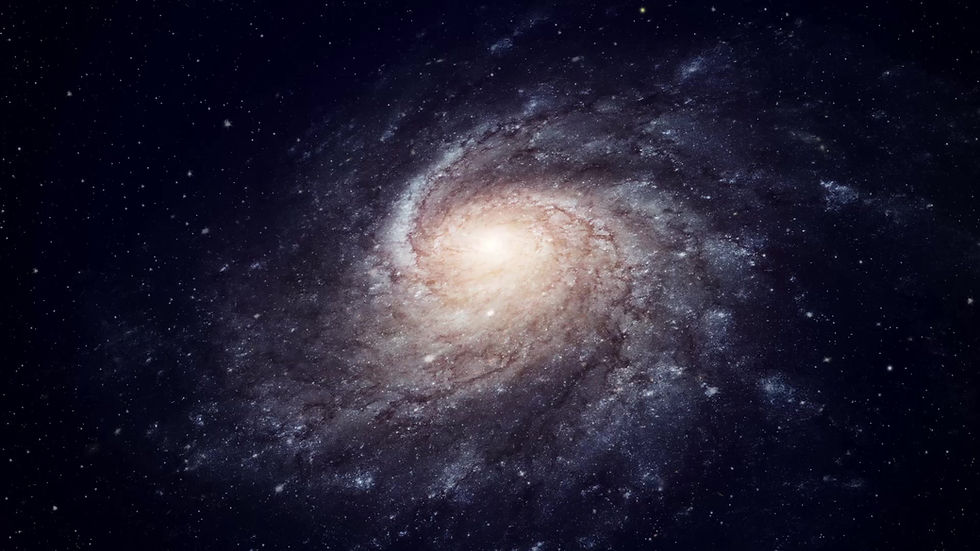

Can We Find Life?
The big question – Is there life beyond Earth? – comes with an ironic asterisk: we don't really have a universally accepted definition of life itself. That said, we might not need one. We need only detect the telltale signs of life in an exoplanet atmosphere, and we have a better understanding of what those look like here on Earth.
An artist's concept of what Kepler-1649c could look like from its surface.
NASA/Ames Research Center/Daniel Rutter
Will we know life when we see it?
The James Webb Space Telescope, launched in 2021, could get the first glimpses: the mix of gases in the atmospheres of Earth-sized exoplanets. Webb, or a similar spacecraft in the future, could pick up signs of an atmosphere like our own – oxygen, carbon dioxide, methane. A strong indication of possible life. Future telescopes might even pick up signs of photosynthesis – the transformation of light into chemical energy by plants – or even gases or molecules suggesting the presence of animal life. Intelligent, technological life might create atmospheric pollution, as it does on our planet, also detectable from afar. Of course, the best we might be able to manage is an estimate of probability. Still, an exoplanet with, say, a 95 percent probability of life would be a game changer of historic proportions.
Artist's rendering of the James Webb Space Telescope.
NASA
How will we find life?
Life might turn up in our own neighborhood: beneath the Martian surface, perhaps, or in the dark, subsurface oceans of Jupiter's moon, Europa. Or maybe the dream of the ages will come true, and we'll eavesdrop on the communications of extraterrestrial civilizations. We might even capture evidence of "technosignatures," or traces of technology (think smog). Barring these strokes of luck, however, the job will be much harder. Light will be the key – light from the atmospheres of exoplanets, split up into a rainbow spectrum that we can read like a bar code. This method, called transit spectroscopy, would provide a menu of gases and chemicals in the skies of these worlds, including those linked to life.
Life as we don't know it
They dwell in the caustic chemical pools of Yellowstone National Park
, in the dry valleys of Antarctica, in superheated vents on the ocean floor, and they belong to branches of life that split from our own billions of years ago. "Extremophiles" are life forms that love extreme environments, thriving in conditions that would kill anything else. They might also be analogs for strange life on distant worlds.
Grand Prismatic Spring in Yellowstone National Park.
NPS/Jim Peaco
Where should we look?
More than 4,900 exoplanets – planets around other stars – have been confirmed to exist in our galaxy, but likely number in the trillions. One of the best tools scientists have to begin narrowing the search for habitable worlds is a concept known as the “habitable zone.” It’s the orbital distance from a star where temperatures would potentially allow liquid water to form on a planet’s surface. Many other conditions also would be required: a planet of suitable size with a suitable atmosphere, and a stable star not prone to erupting in sterilizing flares. The habitable zone is really just a way to make the first cut, and zero in on the planets with the best chance of possessing habitable conditions.


Possible Sign Of Life Found On A Planet 120 Light-Years Away
Scientists using the Webb Space Telescope have identified a molecule in the atmosphere of another planet that could potentially be a sign of life.
During just two observations, scientists found evidence for dimethyl sulfide in the atmosphere of K2-18 b, a giant “sub-Neptune” planet about 120 light-years from the solar system in the constellation Leo.
On Earth, DMS is largely a byproduct of phytoplankton. However, its detection is preliminary and “requires further validation,” according to the authors of a paper due to be published in The Astrophysical Journal Letters.
Search For Life
“Upcoming Webb observations should be able to confirm if DMS is indeed present in the atmosphere of K2-18 b at significant levels,” said Nikku Madhusudhan, an astronomer at the University of Cambridge and lead author of the paper.
The researchers analyzed light from K2-18 b’s host star as it passed through the exoplanet's atmosphere. Webb’s unique ability to see in the infrared coupled with its incredible sensitivity were pivotal.
The ultimate goal of this work is to identify life on a habitable exoplanet.
Exciting Exoplanet
MORE FROMFORBES ADVISOR
Best High-Yield Savings Accounts Of September 2023
B5% Interest Savings Accounts of September 2023
This is not the first time K2-18 b has grabbed the headlines. An exoplanet 8.6 times as massive as Earth that orbits a cool red dwarf star called K2-18, it was discovered by NASA’s Kepler Space Telescope in 2015. Here’s why it’s exciting:
Forbes Daily: Join over 1 million Forbes Daily subscribers and get our best stories, exclusive reporting and essential analysis of the day’s news in your inbox every weekday.
By signing up, you agree to our Terms of Service, and you acknowledge our Privacy Statement. Forbes is protected by reCAPTCHA, and the Google Privacy Policy and Terms of Service apply.
-
It’s positioned in the star’s habitable zone—an orbit around a star close enough to make liquid water possible on the surface of a rocky planet.
-
In 2019, the Hubble Space Telescope found evidence for water vapor in its atmosphere.
-
The new research also revealed the presence of carbon-bearing molecules including methane and carbon dioxide.
-
The abundance of methane and carbon dioxide and shortage of ammonia suggests that there may be an ocean underneath a hydrogen-rich atmosphere—a so-called “Hycean” exoplanet.
Spectra of K2-18 b, obtained with Webb’s NIRISS (Near-Infrared Imager and Slitless Spectrograph) and ... [+]
Illustration: NASA, CSA, ESA, R. Crawford (STScI), J. Olmsted (STScI), Science: N. Madhusudhan (Cambridge University)
Diverse Environments
Not only does its mass mean that its surface gravity would be significantly higher than on Earth, but host star K2-18 is known to be extremely active. The surface of K2-18 b is therefore likely to be frequently drenched in high-energy radiation, creating a hostile environment for life. It’s also likely that the planet’s interior contains a large mantle of high-pressure ice, like Neptune, and that any ocean is too hot to be habitable.
“Our findings underscore the importance of considering diverse habitable environments in the search for life elsewhere,” said Madhusudhan. “Traditionally, the search for life on exoplanets has focused primarily on smaller rocky planets, but the larger Hycean worlds are significantly more conducive to atmospheric observations.”
What Happens Next
Although there isn’t an example in our solar system, sub-Neptunes appear to be the most common type of planet in the Milky Way.
More observations of K2-18 b are planned with Webb’s Mid-Infrared Instrument, said team member Savvas Constantinou of the University of Cambridge, who added: “This means our work here is but an early demonstration of what Webb can observe in habitable-zone exoplanets.”




Perfect solar system' found in search for alien life
Researchers have located "the perfect solar system", forged without the violent collisions that made our own a hotchpotch of different-sized planets.
The system, 100 light years away, has six planets, all about the same size. They've barely changed since its formation up to 12 billion years ago.
These undisturbed conditions make it ideal for learning how these worlds formed and whether they host life.
The research has been published in the scientific journal, Nature.
The creation of our own solar system was a violent process. As planets were forming some crashed into each other, disturbing orbits and leaving us with giants like Jupiter and Saturn alongside relatively small worlds like our own.
In the system HD110067, as astronomers have rather drily named it, things couldn't be more different.
MARK GARLICK/SCIENCE PHOTO LIBRARY
Artwork: Planet formation is typically a violent process
Not only are the planets similarly sized; in a far cry from the unrelated timing of the orbits of the planets in our own solar system, these rotate in synch.
In the time it takes for the innermost planet to go around the star three times, the next planet along gets around twice, and so on out to the fourth planet in the system. From there things change to a 4:3 pattern of relative orbit speeds for the last two planets.
This intricate planetary choreography is so precise that that the researchers have created a cyclical musical piece, akin to a Philip Glass-style composition, with notes and rhythms corresponding to each planet and their orbital periods. You can listen to some of it here:
A musical take on the 'perfect solar system'
Dr Rafael Luque, of the University of Chicago, who led the research described HD110067 as "the perfect solar system".
"It is ideal for studying how planets are created, because this solar system didn't have the chaotic beginnings ours did and has been undisturbed since its formation."
Dr Marina Lafarga-Magro, of Warwick University, said that the system was "beautiful and unique".
"It is really exciting, just seeing something that no-one has seen before," she told BBC News.
WALTER MYERS/SCIENCE PHOTO LIBRARY
Artwork: The new planets are between the size of Neptune, in the foreground, and the Earth
Over the past thirty years, astronomers have discovered thousands of star systems. But none of them are so well suited to study how planets formed. The planets' near identical size and the system's undisturbed nature are gold dust for astronomers because they make it much easier to compare and contrast them. That will help build up a picture of how they first formed and how they evolved.
The system also has a bright star which will make it easier to look for life signs in the planets' atmospheres.
All six of the new planets are what astronomers call "sub-Neptunes", which are larger than the Earth and smaller than the planet Neptune (which is four times wider than the Earth). The six newly discovered planets are between two and three times the size of Earth.
Interest in the new findings has been supercharged since the discovery in September that a sub-Neptune planet, called K2-18b, in another star system, has an atmosphere with hints of a gas that on Earth is produced by living organisms. Astronomers call this a biosignature.
NASA
Artwork: A sub-Neptune planet called k2-18b was found to have hints of life in September
Although our own solar system does not contain any sub-Neptunes, they are thought to be the most common type of planet in the galaxy. Yet astronomers know surprisingly little about these worlds.
They do not know whether they are mostly made of rock, gas or water, or critically, whether they provide conditions for life.
Finding out these details is "one of the hottest topics in the field" according to Dr Luque, adding that the discovery of HD110067 gives his team the perfect opportunity to answer that question relatively quickly.
"It could be a matter of less than ten years," he told BBC News.
"We know the planets, we know where they are, we just need slightly more time, but it will happen."
If the team's next round of observations indicates that sub-Neptunes can also support life, it greatly increases the number of possible habitable planets and therefore increases the chances of detecting signs of life on another world sooner rather than later.
NASA
Artwork: The planets were found using Nasa's TESS space telescope
The race is now on to detect biosignatures on one of the six new sub-Neptunes, or dozens of others detected by rival groups. With a battery of new telescopes with enhanced capabilities and others about to come online, many astronomers believe that we may not have too long to wait for that moment.
The planets were detected using NASA's Transiting Exoplanet Survey Satellite (TESS) and ESA's CHaracterising ExOPlanet Satellite (Cheops).

Astronomers may have found a signature of life on Venus
The search for life beyond Earth has largely revolved around our rocky red neighbor. NASA has launched multiple rovers over the years, with a new one currently en route, to sift through Mars’ dusty surface for signs of water and other hints of habitability.
Now, in a surprising twist, scientists at MIT, Cardiff University, and elsewhere have observed what may be signs of life in the clouds of our other, even closer planetary neighbor, Venus. While they have not found direct evidence of living organisms there, if their observation is indeed associated with life, it must be some sort of “aerial” life-form in Venus’ clouds — the only habitable portion of what is otherwise a scorched and inhospitable world. Their discovery and analysis is published today in the journal Nature Astronomy.
The astronomers, led by Jane Greaves of Cardiff University, detected in Venus’ atmosphere a spectral fingerprint, or light-based signature, of phosphine. MIT scientists have previously shown that if this stinky, poisonous gas were ever detected on a rocky, terrestrial planet, it could only be produced by a living organism there. The researchers made the detection using the James Clerk Maxwell Telescope (JCMT) in Hawaii, and the Atacama Large Millimeter Array (ALMA) observatory in Chile.
The MIT team followed up the new observation with an exhaustive analysis to see whether anything other than life could have produced phosphine in Venus’ harsh, sulfuric environment. Based on the many scenarios they considered, the team concludes that there is no explanation for the phosphine detected in Venus’ clouds, other than the presence of life.
“It’s very hard to prove a negative,” says Clara Sousa-Silva, research scientist in MIT’s Department of Earth, Atmospheric and Planetary Sciences (EAPS). “Now, astronomers will think of all the ways to justify phosphine without life, and I welcome that. Please do, because we are at the end of our possibilities to show abiotic processes that can make phosphine.”
“This means either this is life, or it’s some sort of physical or chemical process that we do not expect to happen on rocky planets,” adds co-author and EAPS Research Scientist Janusz Petkowski.
The other MIT co-authors include William Bains, Sukrit Ranjan, Zhuchang Zhan, and Sara Seager, who is the Class of 1941 Professor of Planetary Science in EAPS with joint appointments in the departments of Physics and of Aeronautics and Astronautics, along with collaborators at Cardiff University, the University of Manchester, Cambridge University, MRC Laboratory of Molecular Biology, Kyoto Sangyo University, Imperial College, the Royal Observatory Greenwich, the Open University, and the East Asian Observatory.
Play video
A search for exotic things
Venus is often referred to as Earth’s twin, as the neighboring planets are similar in their size, mass, and rocky composition. They also have significant atmospheres, although that is where their similarities end. Where Earth is a habitable world of temperate oceans and lakes, Venus’ surface is a boiling hot landscape, with temperatures reaching 900 degrees Fahrenheit and a stifling air that is drier than the driest places on Earth.
Much of the planet’s atmosphere is also quite inhospitable, suffused with thick clouds of sulfuric acid, and cloud droplets that are billions of times more acidic than the most acidic environment on Earth. The atmosphere also lacks nutrients that exist in abundance on a planet surface.
“Venus is a very challenging environment for life of any kind,” Seager says.
There is, however, a narrow, temperate band within Venus’ atmosphere, between 48 and 60 kilometers above the surface, where temperatures range from 30 to 200 degrees Fahrenheit. Scientists have speculated, with much controversy, that if life exists on Venus, this layer of the atmosphere, or cloud deck, is likely the only place where it would survive. And it just so happens that this cloud deck is where the team observed signals of phosphine.
“This phosphine signal is perfectly positioned where others have conjectured the area could be habitable,” Petkowski says.
The detection was first made by Greaves and her team, who used the JCMT to zero in on Venus’ atmosphere for patterns of light that could indicate the presence of unexpected molecules and possible signatures of life. When she picked up a pattern that indicated the presence of phosphine, she contacted Sousa-Silva, who has spent the bulk of her career characterizing the stinky, toxic molecule.
Sousa-Silva initially assumed that astronomers could search for phosphine as a biosignature on much farther-flung planets. “I was thinking really far, many parsecs away, and really not thinking literally the nearest planet to us.”
The team followed up Greaves’ initial observation using the more sensitive ALMA observatory, with the help of Anita Richards, of the ALMA Regional Center at the University of Manchester. Those observations confirmed that what Greaves observed was indeed a pattern of light that matched what phosphine gas would emit within Venus’ clouds.
The researchers then used a model of the Venusian atmosphere, developed by Hideo Sagawa of Kyoto Sangyo University, to interpret the data. They found that phosphine on Venus is a minor gas, existing at a concentration of about 20 out of every billion molecules in the atmosphere. Although that concentration is low, the researchers point out that phosphine produced by life on Earth can be found at even lower concentrations in the atmosphere.
The MIT team, led by Bains and Petkowski, used computer models to explore all the possible chemical and physical pathways not associated with life, that could produce phosphine in Venus’ harsh environment. Bains considered various scenarios that could produce phosphine, such as sunlight, surface minerals, volcanic activity, a meteor strike, and lightning. Ranjan along with Paul Rimmer of Cambridge University then modeled how phosphine produced through these mechanisms could accumulate in the Venusian clouds. In every scenario they considered, the phosphine produced would only amount to a tiny fraction of what the new observations suggest is present on Venus’ clouds.
“We really went through all possible pathways that could produce phosphine on a rocky planet,” Petkowski says. “If this is not life, then our understanding of rocky planets is severely lacking.”
A life in the clouds
If there is indeed life in Venus’ clouds, the researchers believe it to be an aerial form, existing only in Venus’ temperate cloud deck, far above the boiling, volcanic surface.
“A long time ago, Venus is thought to have oceans, and was probably habitable like Earth,” Sousa-Silva says. “As Venus became less hospitable, life would have had to adapt, and they could now be in this narrow envelope of the atmosphere where they can still survive. This could show that even a planet at the edge of the habitable zone could have an atmosphere with a local aerial habitable envelope.”
In a separate line of research, Seager and Petkowski have explored the possibility that the lower layers of Venus’ atmosphere, just below the cloud deck, could be crucial for the survival of a hypothetical Venusian biosphere.
“You can, in principle, have a life cycle that keeps life in the clouds perpetually,” says Petkowski, who envisions any aerial Venusian life to be fundamentally different from life on Earth. “The liquid medium on Venus is not water, as it is on Earth.”
Sousa-Silva is now leading an effort with Jason Dittman at MIT to further confirm the phosphine detection with other telescopes. They are also hoping to map the presence of the molecule across Venus’ atmosphere, to see if there are daily or seasonal variations in the signal that would suggest activity associated with life.
“Technically, biomolecules have been found in Venus’ atmosphere before, but these molecules are also associated with a thousand things other than life,” Sousa-Silva says. “The reason phosphine is special is, without life it is very difficult to make phosphine on rocky planets. Earth has been the only terrestrial planet where we have found phosphine, because there is life here. Until now.”
This research was funded, in part, by the Science and Technology Facilities Council, the European Southern Observatory, the Japan Society for the Promotion of Science, the Heising-Simons Foundation, the Change Happens Foundation, the Simons Foundation, and the European Union’s Horizon 2020 research and innovation program.

Signs of Life on Mars? NASA’s Perseverance Rover Begins the Hunt
To get a detailed profile of rock textures, contours, and composition, PIXL’s maps of the chemicals throughout a rock can be combined with mineral maps produced by the SHERLOC instrument and its partner, WATSON. SHERLOC – short for Scanning Habitable Environments with Raman & Luminescence for Organics & Chemicals – uses an ultraviolet laser to identify some of the minerals in the rock, while WATSON takes closeup images that scientists can use to determine grain size, roundness, and texture, all of which can help determine how the rock was formed.
Early WATSON closeups have already yielded a trove of data from Martian rocks, the scientists said, such as a variety of colors, sizes of grains in the sediment, and even the presence of “cement” between the grains. Such details can provide important clues about formation history, water flow, and ancient, potentially habitable Martian environments. And combined with those from PIXL, they can provide a broader environmental and even historical snapshot of Jezero Crater.
“What is the crater floor made out of? What were the conditions like on the crater floor?” asks Luther Beegle of JPL, SHERLOC’s principal investigator. “That does tell us a lot about the early days of Mars, and potentially how Mars formed. If we have an idea of what the history of Mars is like, we’ll be able to understand the potential for finding evidence of life.”
This data shows chemicals detected within a single rock on Mars by PIXL, one of the instruments on the end of the robotic arm aboard NASA’s Perseverance Mars rover. PIXL allows scientists to study where specific chemicals can be found within an area as small as a postage stamp.
Credit: NASA/JPL-Caltech
The Science Team
While the rover has significant autonomous capabilities, such as driving itself across the Martian landscape, hundreds of earthbound scientists are still involved in analyzing results and planning further investigations.
“There are almost 500 people on the science team,” Beegle said. “The number of participants in any given action by the rover is on the order of 100. It’s great to see these scientists come to agreement in analyzing the clues, prioritizing each step, and putting together the pieces of the Jezero science puzzle.”
That will be critical when the Mars 2020 Perseverance rover collects its first samples for eventual return to Earth. They’ll be sealed in superclean metallic tubes on the Martian surface so that a future mission could collect them and send back to the home planet for further analysis.
Despite decades of investigation on the question of potential life, the Red Planet has stubbornly kept its secrets.
“Mars 2020, in my view, is the best opportunity we will have in our lifetime to address that question,” said Kenneth Williford, the deputy project scientist for Perseverance.
The geological details are critical, Allwood said, to place any indication of possible life in context, and to check scientists’ ideas about how a second example of life’s origin could come about.
Combined with other instruments on the rover, the detectors on the arm, including SHERLOC and WATSON, could make humanity’s first discovery of life beyond Earth.
More About the Mission
A key objective for Perseverance’s mission on Mars is astrobiology, including the search for signs of ancient microbial life. The rover will characterize the planet’s geology and past climate, pave the way for human exploration of the Red Planet, and be the first mission to collect and cache Martian rock and regolith (broken rock and dust).
Subsequent NASA missions, in cooperation with ESA (European Space Agency), would send spacecraft to Mars to collect these sealed samples from the surface and return them to Earth for in-depth analysis.
The Mars 2020 Perseverance mission is part of NASA’s Moon to Mars exploration approach, which includes Artemis missions to the Moon that will help prepare for human exploration of the Red Planet.
JPL, which is managed for NASA by Caltech in Pasadena, California, built and manages operations of the Perseverance rover.













Large exoplanet could have the right conditions for life
Astronomers have found an exoplanet more than twice the size of Earth to be potentially habitable, opening the search for life to planets significantly larger than Earth but smaller than Neptune.
Water vapour has been detected in the atmospheres of a number of exoplanets but, even if the planet is in the habitable zone, that doesn’t necessarily mean there are habitable conditions on the surface
Nikku Madhusudhan
A team from the University of Cambridge used the mass, radius, and atmospheric data of the exoplanet K2-18b and determined that it’s possible for the planet to host liquid water at habitable conditions beneath its hydrogen-rich atmosphere. The results are reported in The Astrophysical Journal Letters.
The exoplanet K2-18b, 124 light-years away, is 2.6 times the radius and 8.6 times the mass of Earth, and orbits its star within the habitable zone, where temperatures could allow liquid water to exist. The planet was the subject of significant media coverage in the autumn of 2019, as two different teams reported detection of water vapour in its hydrogen-rich atmosphere. However, the extent of the atmosphere and the conditions of the interior underneath remained unknown.
“Water vapour has been detected in the atmospheres of a number of exoplanets but, even if the planet is in the habitable zone, that doesn’t necessarily mean there are habitable conditions on the surface,” said Dr Nikku Madhusudhan from Cambridge’s Institute of Astronomy, who led the new research. “To establish the prospects for habitability, it is important to obtain a unified understanding of the interior and atmospheric conditions on the planet – in particular, whether liquid water can exist beneath the atmosphere.”
Given the large size of K2-18b, it has been suggested that it would be more like a smaller version of Neptune than a larger version of Earth. A ‘mini-Neptune’ is expected to have a significant hydrogen ‘envelope’ surrounding a layer of high-pressure water, with an inner core of rock and iron. If the hydrogen envelope is too thick, the temperature and pressure at the surface of the water layer beneath would be far too great to support life.
Now, Madhusudhan and his team have shown that despite the size of K2-18b, its hydrogen envelope is not necessarily too thick and the water layer could have the right conditions to support life. They used the existing observations of the atmosphere, as well as the mass and radius, to determine the composition and structure of both the atmosphere and interior using detailed numerical models and statistical methods to explain the data.
The researchers confirmed the atmosphere to be hydrogen-rich with a significant amount of water vapour. They also found that levels of other chemicals such as methane and ammonia were lower than expected for such an atmosphere. Whether these levels can be attributed to biological processes remains to be seen.
The team then used the atmospheric properties as boundary conditions for models of the planetary interior. They explored a wide range of models that could explain the atmospheric properties as well as the mass and radius of the planet. This allowed them to obtain the range of possible conditions in the interior, including the extent of the hydrogen envelope and the temperatures and pressures in the water layer.
“We wanted to know the thickness of the hydrogen envelope – how deep the hydrogen goes,” said co-author Matthew Nixon, a PhD student at the Institute of Astronomy. “While this is a question with multiple solutions, we’ve shown that you don’t need much hydrogen to explain all the observations together.”
The researchers found that the maximum extent of the hydrogen envelope allowed by the data is around 6% of the planet’s mass, though most of the solutions require much less. The minimum amount of hydrogen is about one-millionth by mass, similar to the mass fraction of the Earth’s atmosphere. In particular, a number of scenarios allow for an ocean world, with liquid water below the atmosphere at pressures and temperatures similar to those found in Earth’s oceans.
This study opens the search for habitable conditions and bio-signatures outside the solar system to exoplanets that are significantly larger than Earth, beyond Earth-like exoplanets. Additionally, planets such as K2-18b are more accessible to atmospheric observations with current and future observational facilities. The atmospheric constraints obtained in this study can be refined using future observations with large facilities such as the upcoming James Webb Space Telescope.


Life probably exists beyond Earth. So how do we find it?
With next-generation telescopes, tiny space probes, and more, scientists aim to search for life beyond our solar system—and make contact.
In her office on the 17th floor of MIT’s Building 54, Sara Seager is about as close to space as you can get in Cambridge, Massachusetts. From her window, she can see across the Charles River to downtown Boston in one direction and past Fenway Park in the other. Inside, her view extends to the Milky Way and beyond.
Seager, 47, is an astrophysicist. Her specialty is exoplanets, namely all the planets in the universe except the ones you already know about revolving around our sun. On a blackboard, she has sketched an equation she thought up to estimate the chances of detecting life on such a planet. Beneath another blackboard filled with more equations is a clutter of memorabilia, including a vial containing some glossy black shards.
“It’s a rock that we melted.”
Seager speaks in brisk, uninflected phrases, and she has penetrating hazel eyes that hold on to whomever she is talking to. She explains that there are planets known as hot super-Earths whizzing about so close to their stars that a year lasts less than a day. “These planets are so hot, they probably have giant lava lakes,” she says. Hence, the melted rock.
“We wanted to test the brightness of lava.”
Laser beams streak from the European Southern Observatory’s Very Large Telescope array in Chile’s Atacama Desert. The lasers create artificial guide stars that help astronomers correct for distortions caused by atmospheric turbulence. The telescope is one of only a few able to directly capture image...
Photograph by Gerhard Hüdepohl, ESO
When Seager entered graduate school in the mid-1990s, we didn’t know about planets that circle their stars in hours or others that take almost a million years. We didn’t know about planets that revolve around two stars, or rogue planets that don’t orbit any star but just wander about in space. In fact, we didn’t know for sure that any planets at all existed beyond our solar system, and a lot of the assumptions we made about planet-ness have turned out to be wrong. The very first exoplanet found—51 Pegasi b, discovered in 1995—was itself a surprise: A giant planet crammed up against its star, winging around it in just four days.
“51 Peg should have let everyone know it was going to be a crazy ride,” Seager says. “That planet shouldn’t be there.”
Today we have confirmed about 4,000 exoplanets. The majority were discovered by the Kepler space telescope, launched in 2009. Kepler’s mission was to see how many planets it could find orbiting some 150,000 stars in one tiny patch of sky—about as much as you can cover with your hand with your arm outstretched. But its ultimate purpose was to resolve a much more freighted question: Are places where life might evolve common in the universe or vanishingly rare, leaving us effectively without hope of ever knowing whether another living world exists?
Kepler’s answer was unequivocal. There are more planets than there are stars, and at least a quarter are Earth-size planets in their star’s so-called habitable zone, where conditions are neither too hot nor too cold for life. With a minimum of 100 billion stars in the Milky Way, that means there are at least 25 billion places where life could conceivably take hold in our galaxy alone—and our galaxy is one among trillions.
Using a model, MIT astrophysicist Sara Seager demonstrates Starshade, under development at NASA’s Jet Propulsion Lab in Pasadena, California. Deployed in space, the device, more than 100 feet in diameter, would block the light from a star. A space telescope would capture an image of a planet when it’s b...
It’s no wonder that Kepler, which ran out of fuel last October, is regarded almost with reverence by astronomers. (“Kepler was the greatest step forward in the Copernican revolution since Copernicus,” University of California, Berkeley astrophysicist Andrew Siemion told me.) It’s changed the way we approach one of the great mysteries of existence. The question is no longer, is there life beyond Earth? It’s a pretty sure bet there is. The question now is, how do we find it?
The revelation that the galaxy is teeming with planets has reenergized the search for life. A surge in private funding has created a much more nimble, risk-friendly research agenda. NASA too is intensifying its efforts in astrobiology. Most of the research is focused on finding signs of any sort of life on other worlds. But the prospect of new targets, new money, and ever increasing computational power has also galvanized the decades-long search for intelligent aliens.
To Seager, a MacArthur “genius award” winner, participating on the Kepler team was one more step toward a lifelong goal: to find an Earth-like planet orbiting a sunlike star. Her current focus is the Transiting Exoplanet Survey Satellite (TESS), an MIT-led NASA space telescope launched last year. Like Kepler, TESS looks for a slight dimming in the luminosity of a star when a planet passes—transits—in front of it. TESS is scanning nearly the whole sky, with the goal of identifying about 50 exoplanets with rocky surfaces like Earth’s that could be investigated by more powerful telescopes coming on line, beginning with the James Webb Space Telescope, which NASA hopes to launch in 2021.
On her “vision table,” which runs along one wall of her office, Seager has collected some objects that express “where I am now and where I’m going, so I can remind myself why I’m working so hard.” Among them are some polished stone orbs representing a red dwarf star and its covey of planets, and a model of ASTERIA, a low-cost planet-finding satellite she developed.
NASA’s James Webb Space Telescope is tested in a giant cryogenic chamber at Johnson Space Center in Houston, Texas, that simulates the frigid conditions of space. Far more powerful than the Hubble Space Telescope, it will probe the formation of stars, galaxies, and solar systems that could support life.
Photograph by Chris Gunn, NASA
“I haven’t gotten around to putting this up,” Seager says, unrolling a poster that’s a fitting expression of where her career began. It’s a chart showing the spectral signatures of the elements, like colored bar codes. Every chemical compound absorbs a unique set of wavelengths of light. (We see leaves as green, for instance, because chlorophyll is a light-hungry molecule that absorbs red and blue, so the only light reflected is green.) While still in her 20s, Seager came up with the idea that compounds in a transiting planet’s upper atmosphere might leave their spectral fingerprints in starlight passing through. Theoretically, if there are gases in a planet’s atmosphere from living creatures, we could see the evidence in the light that reaches us.
“It’s going to be really hard,” she tells me. “Think of a rocky planet’s atmosphere as the skin of an onion, and the whole thing is in front of, like, an IMAX screen.”
There’s an outside chance a rocky planet orbits a star close enough for the Webb telescope to capture sufficient light to investigate it for signs of life. But most scientists, including Seager, think we’ll need to wait for the next generation of space telescopes. Covering most of the wall over her vision table is a panel of micro-thin black plastic shaped like the petal of a giant flower. It’s a reminder of where she’s going: a space mission, still in development, that she believes can lead her to another living Earth.
NEW WAYS OF SEEING
THE NEXT WAVE OF
PLANET HUNTERS
The Kepler telescope, which detected
thousands of exoplanets, was retired last year
when it ran out of fuel, but new telescopes
promise dramatic improvements in the hunt.
The telescopes shown here are expected to
significantly advance our ability to detect
signs of habitability thousands of light- years
away. In addition to a planet’s size and
distance from its star, they might be able to
study its terrain and check for cloud cover.
ELT
Extremely Large
Telescope
Captures visible and near-
infrared spectrum images 16
times as sharp as those of
the Hubble Space Telescope.
SUBARU TELESCOPE
Subaru Coronagraphic
Extreme Adaptive Optics
Removes distant starlight
reaching the Subaru tele-
scope, allowing astronomers
to directly image exoplanets.
TERRESTRIAL INSTRUMENTS
Ground-based scopes can hold heavy, powerful optics
that are comparatively easy to maintain. But Earth’s
atmosphere filters and distorts starlight, limiting what
these telescopes can see in outer space.
39.3 meters
Aperture
8.2 meters
Start date
2014
Expected start: 2024
ORBITAL INSTRUMENTS
Away from Earth’s atmosphere, telescopes can detect
frequencies and wavelengths across the electromagnetic
spectrum. But they must be small enough to launch,
and they fly too far away to be repaired.
WFIRST
Wide Field Infrared
Survey Telescope
Finds exoplanets using light
warped by the gravity of
distant stars; it could also be
paired with Starshade.
STARSHADE
A flower-shaped light
shield more than a hun-
dred feet in diameter,
the Starshade will work
in tandem with a telescope
such as WFIRST. It
will block a host star’s
light, allowing astronomers
a direct view of its
exoplanets. This mission
is still in development.
TESS
Transiting Exoplanet
Survey Satellite
Detects small planets orbit-
ing bright stars, which could
be good candidates for more
in-depth habitability studies.
JWST
James Webb
Space Telescope
Studies distant stars and
exoplanets using four instru-
ments, including infrared
cameras and spectrographs.
4 cameras, 10.5 cm each
6.5 meters
2.4 meters
Aperture
Start date
Expected start: 2021
Expected start: 2025
2018
ART DIRECTION: JASON TREAT, NGM STAFF; SEAN MCNAUGHTON
SOURCES: NATIONAL ASTRONOMICAL OBSERVATORY OF JAPAN; NASA; EUROPEAN SOUTHERN OBSERVATORY
From an early age, Olivier Guyon has had a problem with sleep: namely, that it’s supposed to happen at night, when it’s so much better to be awake. Guyon grew up in France, in the countryside of Champagne. When he was 11, his parents bought him a small telescope, which he says they later regretted. He spent many nights peering into it, only to fall asleep the next day in class. When he outgrew that telescope, he built a bigger one. But while he could magnify his view of heavenly objects, Guyon could do nothing to enlarge the number of hours in the night. Something had to give, so one day when he was a teenager, he decided to do away with sleep almost entirely. At first he felt great, but after a week or so, he became seriously ill. Recalling it now, he still shudders.
At 43 years old, Guyon today has a very big telescope to work with. The Subaru observatory, along with 12 others, sits atop the summit of Mauna Kea, on Hawaii’s Big Island. The Subaru’s 8.2-meter (27 feet) reflector is among the largest single-piece mirrors in the world. (Operated by the National Astronomical Observatory of Japan, the telescope has no affiliation with the car company—Subaru is the Japanese name for the Pleiades star cluster.) At 13,796 feet above sea level, Mauna Kea affords one of the highest, clearest views of the universe, yet it’s only an hour and a half drive from Guyon’s home in Hilo. The proximity allows him to make frequent trips to test and improve the instrument he built and attached to the telescope, often working through the night. He carries around a thermos of espresso, and for a while he took to spiking it with shots of liquid caffeine, until a friend pointed out that his daily intake was more than half the lethal dose.
“We can spend a couple weeks up here, and we start to forget about life on Earth,” he tells me. “First you forget the day of the week. Then you start forgetting to call your family.”


